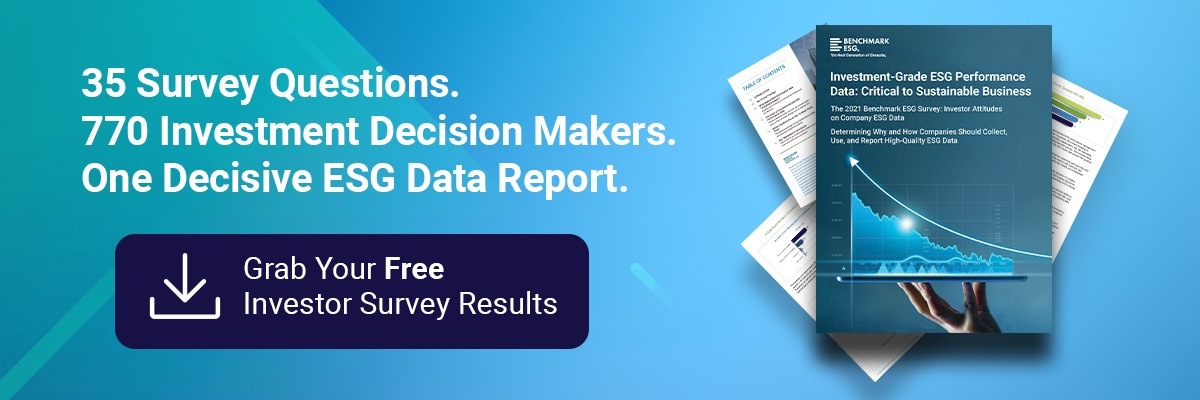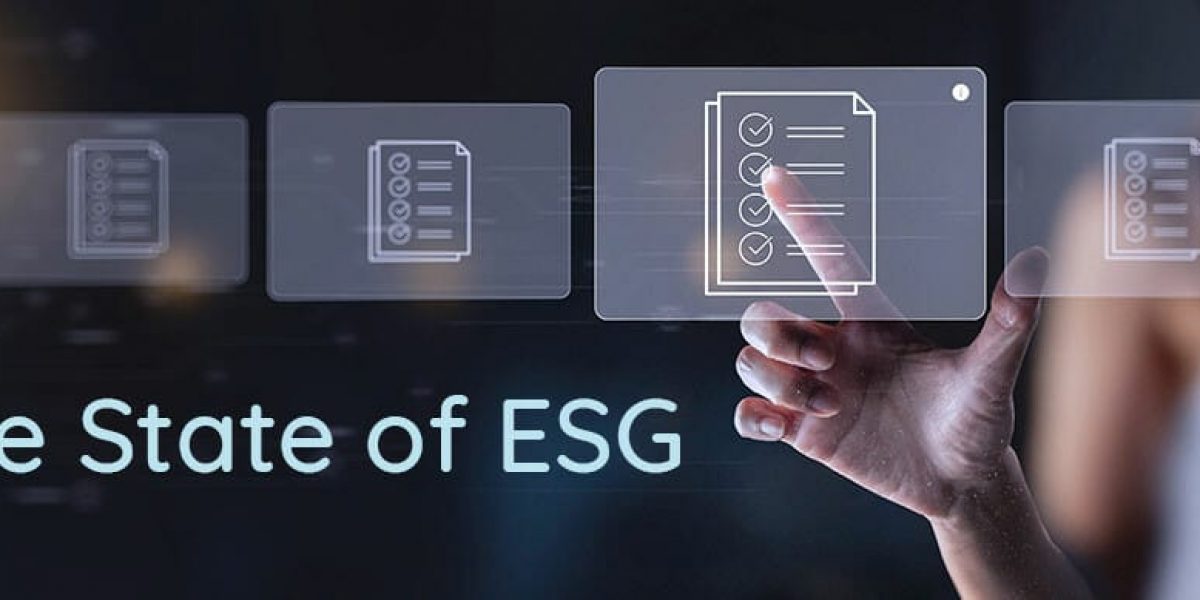The current economic state and recent regulatory priorities mean fully engaging with a rapidly evolving ESG landscape has become a necessary, if challenging, charge for all corporations. The SEC’s recently proposed rule on Scope 3 emissions reporting has only reaffirmed the need.
At the May 2022 Benchmark Gensuite® Impact Conference, one throughline became exceedingly clear: ESG reporting is changing. Fast. And businesses are going to need to change with it.
That’s why we were fortunate to be joined by an insightful panel of industry experts, including Kevin O’Neill (Senior Manager, Product Management, Benchmark Digital Partners), Christine Haman (Sustainability and ESG Manager, Trinity Consultants), and Brendan Walsh (Partnerships Account Manager, CDP), who spoke about the state of ESG now—standards, regulations, trends, solutions —and why it’s become mission critical to make the transition as soon as possible.
The Growing Financial Importance of ESG
Early in his presentation, Kevin O’Neill explained how capital markets are driving demand for investment-grade ESG data. Companies are beginning to feel direct pressure from investors and customers alike.
“I wouldn’t describe it as a ripple effect,” Kevin said. “There’s more like a tsunami of change coming. Being able to make sure you have ESG data that’s ready, auditable, and able to be shared with stakeholders is going to be really important for the coming future.”
Will ESG Be a Part of Mainstream Investing?
The answer is a resounding yes. What was once only part of exclusionary funds just three years ago, has now moved to realms like risk management, value creation, and creating more impact. While impact investing remains a relatively small part of global assets under management, Kevin notes that it’s clearly something that will keep growing, with even large investment firms like BlackRock getting involved.
“A big reason why that’s happening is that over the past 10 years, a lot of new data has shown that companies that have invested in ESG have higher long-term risk-adjusted returns,” Kevin said. “They’ve been outperforming the market in a way that a lot of investors believe is causative and not just correlative.”
Kevin also notes that we are currently in the midst of the largest wealth transfer in history. Baby boomers are beginning to pass their money onto heirs, including Millennials and Gen Z—two groups in particular that prioritize making positive changes to the environment.

How ESG Affects Financial Performance
While the growth of regulatory standards is a critical reason to invest in ESG, there are great financial reasons to do it, too. As Kevin explained, consumers are demanding more sustainable products, and responding to that demand can enhance a company’s reputation with both customers and employees looking for a quality culture.
There are built-in cost savings as well, such as reducing reliance on fossil fuels and better energy efficiency with improved buildings and appliances. On the government side of things, embracing ESG means reducing the risk of regulatory intervention while improving access to certain tax advantages and different markets.
Watch the full session recording:
SEC-Proposed Scope 3 Emissions Reporting Rule and What It Means For You
Christine Haman delved into the recent SEC proposed rule for Scope 3 emissions and what it could mean for companies.
Calculating and Managing Scope 3 and GHG Emissions
Christine laid out a simple five-step process that businesses can take for calculating and managing their emissions, which begins with selecting a baseline year and identifying sources of Scope 1, 2, and 3 emissions and ends with rolling it all up to the corporate level.
One of the best tips Christine offered for handling emissions. Moving away from Microsoft Excel.
“I do have some clients that have historically used Microsoft Excel to calculate some of these Scope 1 and Scope 2 emissions,” Christine said. “It’s really about treating it like your financial data. Would you use Microsoft Excel to track that?” Switching to a digital solution, she added, is critical for success.
Business Goals for Inclusion of Scope 3
While public companies must disclose Scope 3 emissions only where material or if they’ve set a public target, Christine presented some of the concrete benefits awaiting any business that embraces the inclusion of Scope 3 emissions in its ESG disclosures. These benefits include the improvement of corporate reputation and accountability, improved supply chain efficiency, and a reduction in material and energy usage.
The Benefits of Employing CDP
Brendan Walsh of the CDP took attendees on a deep dive of the organization and offered further insight into the state of ESG in today’s landscape. A nonprofit organization that has pioneered and driven environmental disclosures for the last two decades, the CDP is one of the true leaders in the field, with 280 supply chain members and over 14,000 companies worldwide disclosing to them.
Brendan notes a growing interest among investors, customers and employees in how companies plan on handling the current climate crisis. However, he estimates that only one third of organizations disclosing to the CDP reported developing a low-carbon transition plan, while less than 35% of emissions reductions targets are credible as validated by SBTi and only 6% of all reporting organizations disclosed details of a Net Zero target.
“When it comes to legitimate steps being taken, the major players in those high-emitting industries are not changing their business model fast enough,” Brendan said. “But disclosures are a good start. As we set the world on a path towards net zero, CDP disclosures will help companies as they pivot their assets, operations, and entire business model towards a trajectory that aligns with the latest climate science.”
Learn More About The State of ESG today and How to Make an Impactful Transition
With a topic as vast and fast moving as the current state of ESG, these insights represent just a fraction of what was shared during both this panel and the 2022 Impact Conference as a whole. Access the full session recording to learn more, and stay tuned for more updates from this year’s conference!



